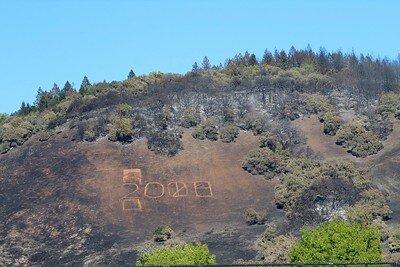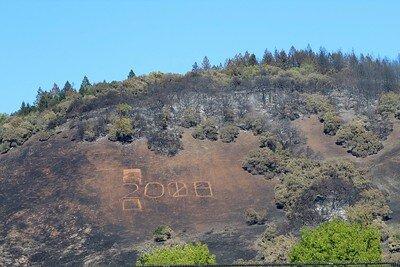The raging Glass Fire has burned over 65,000 acres and destroyed over a thousand structures. Additionally, the Shady and Boysen fires have merged with the Glass Fire, and together they have affected both Sonoma and Napa county. This has forced individuals out of their homes to seek asylum in hotels and other safe living accommodations. In an SFGate article, Cal Fire Chief Ben Nichols stated, “[The Glass Fire] has been extremely difficult to contain and fight.”
At 4:00 AM on a Sunday morning, the Glass Fire started by burning 20 acres at North Fork Crystal Springs Road in Deer Park, then expanding to 11,000 acres overnight with 0% containment. By Monday evening, the blaze had tripled in size, scorching 36,236 acres with 0% containment. Flames overnight destroyed several homes in eastern Santa Rosa’s Skyhawk neighborhood, and according to the Press Democrat, this included, “At least a dozen homes on the stretch of Mountain Hawk between Brigadoon Way and Nighthawk Drive.” Cal Fire reported that 242 structures were damaged and 1,235 structures were destroyed. More than 8,000 structures are threatened by the flames.
The fire received its name from the nearby mountain, Glass Mountain. Cal Fire explained that the cause of the fire was due to “…poor humidity and above average temperatures.”
The planet has heated up continuously since the start of the Industrial Revolution in the late 1800s, when the burning of massive quantities of fossil fuels began releasing carbon dioxide that traps excess heat in the atmosphere. According to National Geographic, “Increasing heat, shifts in plant communities, and other climate-related changes have vastly increased the likelihood that fires will start more often and burn more intensely and widely than they have in the past.” The dry vegetation and rising temperatures give the perfect scenario for a blazing fire.
Cal Fire said, in their Monday morning incident report, “A red flag warning is in effect through today for strong and gusty offshore winds, low humidity, and dry fuels. The fire has been at a dangerous rate of spread and has expanded into Sonoma County.”
With the red flag warning in effect, officials from local law enforcement agencies and emergency services were skeptical to give residents in Oakmont and other communities in east Sonoma County a timeline to return to their homes. Cal Fire Chief Ben Nicholls said, “As we get deeper into the fire perimeter, that’s going to take a longer time for those public safety tasks to be completed before those homes can be reoccupied.”
Although the Glass Fire remains only 30% contained, many residents are urging their local officials to lift the evacuation ban. Only 4,500 Sonoma County residents were allowed to return home by Friday, October 2. Public safety officials said that the danger of the fire was still too high to determine when the remaining 14,520 residents will be able to return home.





![[Both photos courtesy of sonoma.edu]
Ming-Ting Mike Lee stepped in as the new SSU president following Sakakis resignation in July 2022](https://sonomastatestar.com/wp-content/uploads/2024/04/CC4520AB-22A7-41B2-9F6F-2A2D5F76A28C-1200x1200.jpeg)



























